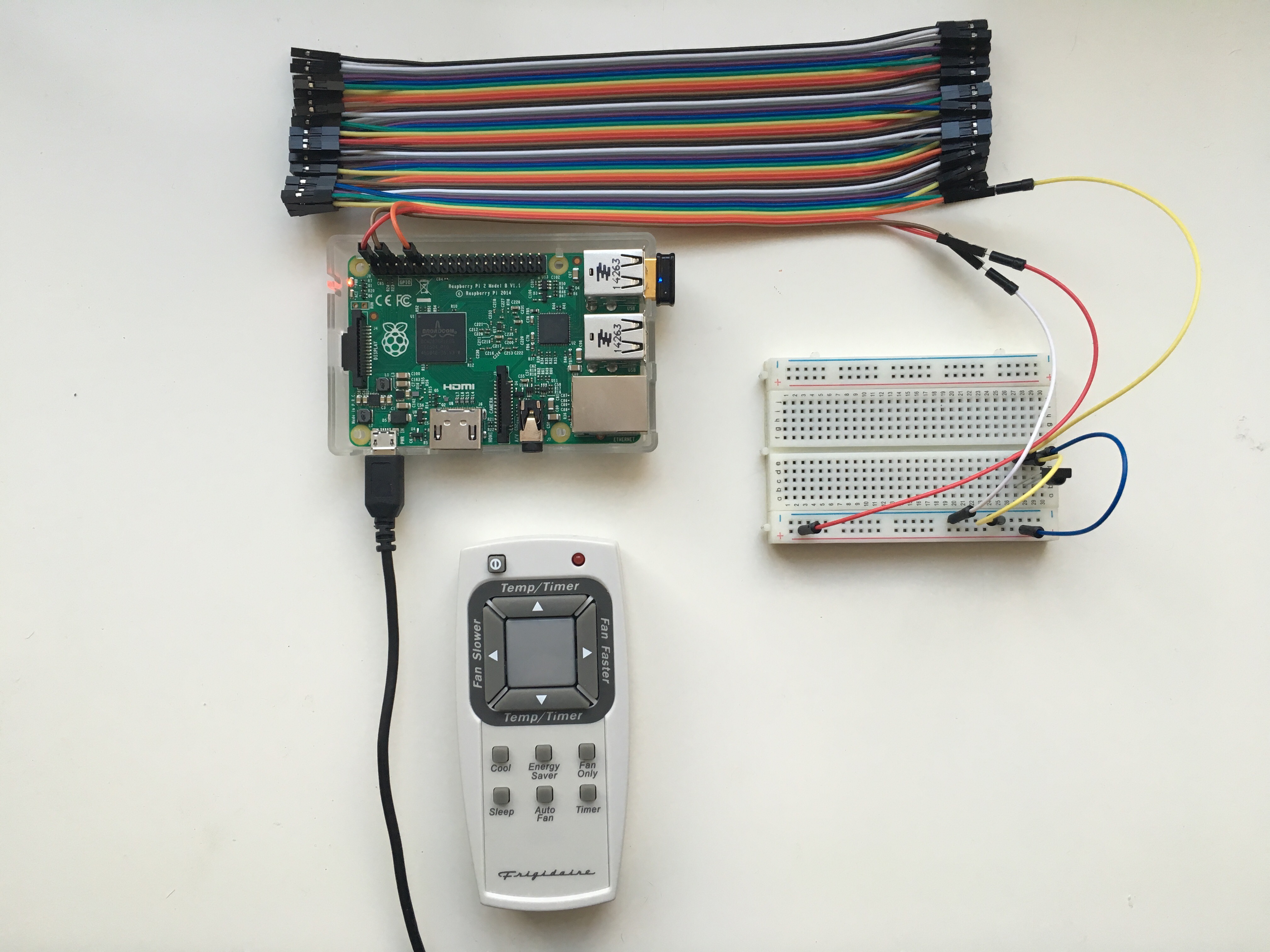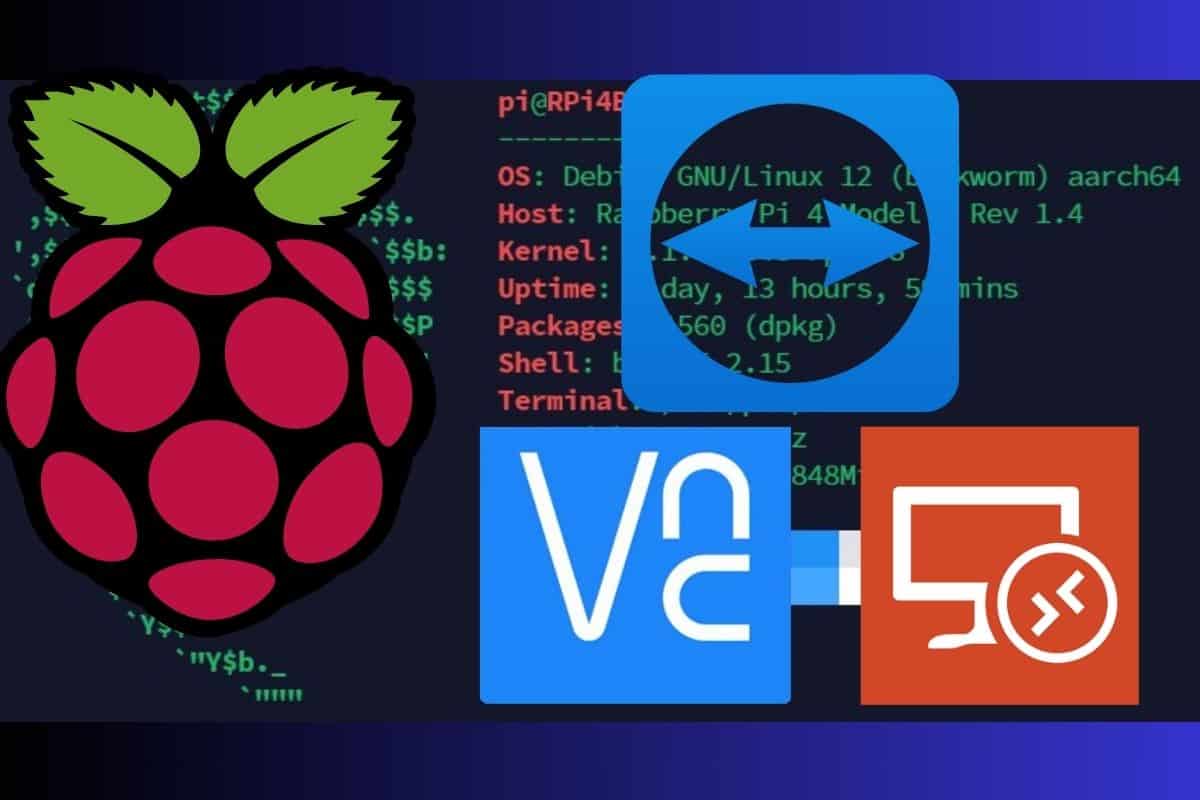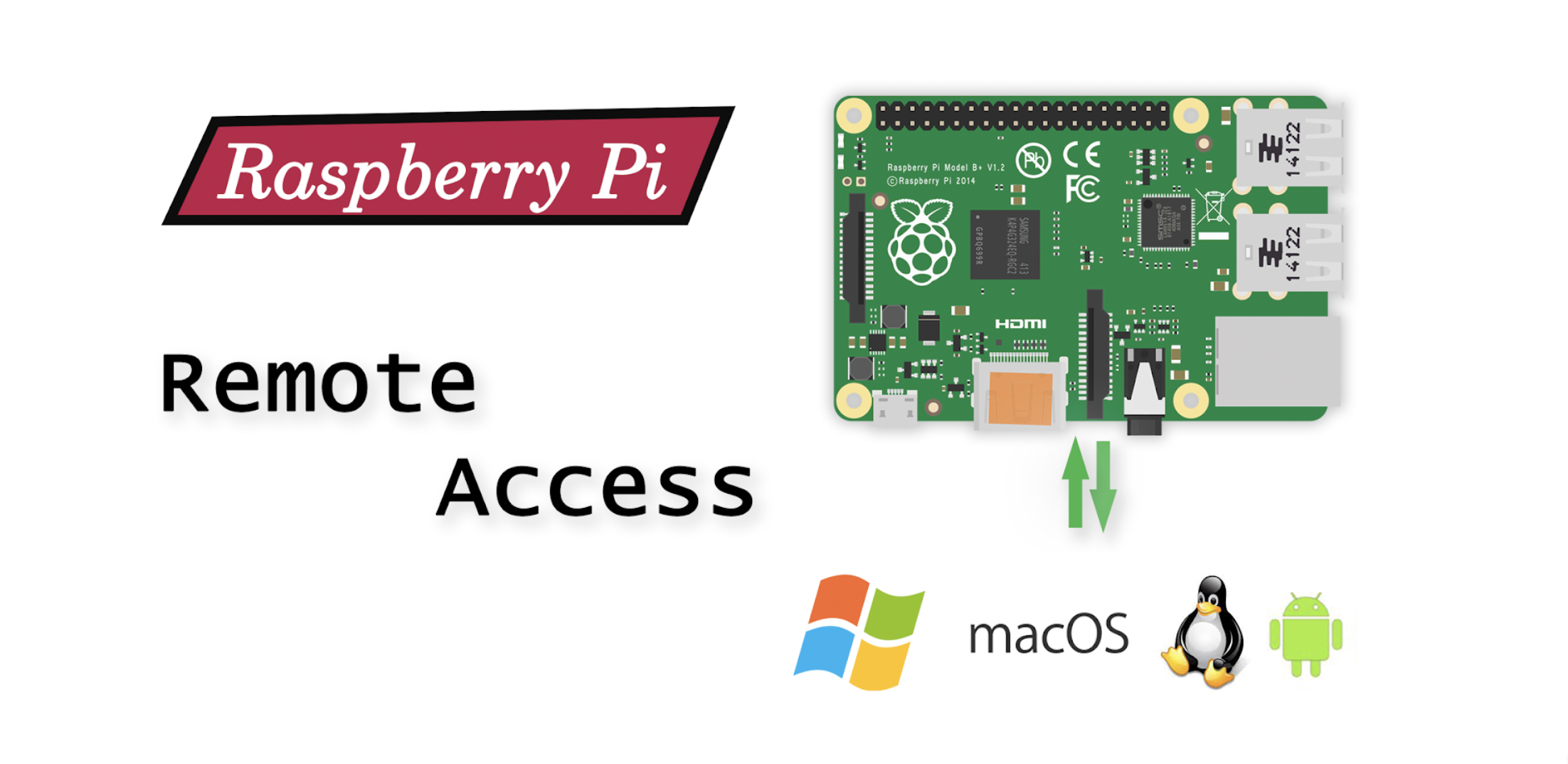Remote Pi Access: Unleash Its Power Anywhere
Imagine having the full power of your Raspberry Pi at your fingertips, no matter where you are in the world. This isn't just a dream; it's a practical reality with robust remote internet access Raspberry Pi solutions. Whether you're monitoring a smart home project, running a server, or simply need to access files, the ability to connect to your tiny computer from afar opens up a world of possibilities, truly saying goodbye to network limitations and hello to limitless Raspberry Pi possibilities!
For many enthusiasts and professionals, the Raspberry Pi serves as a versatile mini-computer, capable of everything from home automation to sophisticated data processing. However, its true potential is unlocked when you can access and control it remotely. This comprehensive guide will walk you through everything you need to know to set up remote access to your Raspberry Pi, explaining each step in detail and providing the insights you need to choose the best method for your specific needs.
Table of Contents
- Introduction to Remote Internet Access Raspberry Pi
- Why Remote Access is a Game-Changer for Your Pi
- The Core Methods for Remote Internet Access Raspberry Pi
- SSH: The Secure Command Line Powerhouse
- VNC and XRDP: Graphical Freedom for Your Remote Pi
- Raspberry Pi Connect: The Native Web Solution
- Beyond the Basics: Advanced Techniques and Security
- Troubleshooting and Best Practices for Remote Pi Access
- Conclusion: Empowering Your Raspberry Pi Remotely
Introduction to Remote Internet Access Raspberry Pi
The concept of remote internet access Raspberry Pi is about connecting to your Raspberry Pi from a different location using an internet connection. This means you could be at work, on vacation, or simply in another room, and still be able to control your Pi as if you were sitting right in front of it. This capability is crucial for projects that need continuous operation or monitoring, like a home server, a security camera system, or an environmental sensor array.
Historically, accessing a Raspberry Pi (or any home computer for that matter) from outside your home network would usually need you to jump through a lot of hoops, get an IP address, and tweak a few settings. However, advancements in software and services have made this process significantly easier and more secure. In this article, I’ll share a few easy (and free) ways to access your Pi remotely, ensuring you can take full control of your Raspberry Pi with our comprehensive guide to SSH remote access and other methods.
Why Remote Access is a Game-Changer for Your Pi
Why bother with remote access? The benefits are manifold. First, convenience: you don't need a monitor, keyboard, or mouse directly connected to your Pi. This is especially useful for "headless" setups where the Pi is tucked away in a corner, performing its duties silently. Second, flexibility: you can manage your Pi from any device – a laptop, a tablet, or even a smartphone. This simple guide takes you through the steps of remote access your Raspberry Pi from any computer or mobile device.
Beyond convenience, remote access enables continuous operation and monitoring. You can live monitor your Raspberry Pi's remotely, seeing all their crucial information to ensure everything is running smoothly. This is vital for critical applications where downtime can be costly or disruptive. Moreover, it allows for remote development. In this tutorial, you went through the whole process of setting up a headless Raspberry Pi for remote development using VS Code, which offers a wide range of benefits for coders and developers. Transform your Raspberry Pi into a powerful networking hub by mastering essential connectivity features and advanced networking capabilities.
- Is Kris Jenner Full Armenian
- Rowan Atkinson Death News
- Hdmovies4u Google Search
- 1tamilblasters Rodeo
- Dolphy Family Tree
The Core Methods for Remote Internet Access Raspberry Pi
There are three primary ways to access Raspberry Pi remotely, each with its own advantages and ideal use cases. These methods range from command-line interfaces to full graphical desktop environments. We will examine three methods for effectively and securely accessing your Raspberry Pi remotely, focusing on the most common and reliable solutions.
Traditional Hurdles: Port Forwarding and Dynamic DNS
How do you access a Raspberry Pi over the internet? The simplest answer used to be through port forwarding combined with Dynamic DNS (DDNS). To access a Raspberry Pi (or any home computer for that matter) from outside your home network, you’d usually need to jump through a lot of hoops, get an IP address, and tweak a few settings on your router. Port forwarding involves telling your router to send incoming internet traffic on a specific port to your Raspberry Pi's local IP address. DDNS helps by mapping a memorable hostname to your home network's ever-changing public IP address, so you don't have to constantly track it.
While effective, this method has security implications as it exposes your Pi directly to the open internet. It requires careful configuration of your router and understanding of network security. Many users prefer methods that don't require opening ports, due to complexity and security concerns. Solutions like TeamViewer, VNC, or XRDP can provide remote access to a Raspberry Pi over the internet, often without needing direct port forwarding if they use intermediary servers.
SSH: The Secure Command Line Powerhouse
One of my favorite ways of creating a remote connection to a Raspberry Pi is by using SSH (Secure Shell). This is because SSH gives me secure remote access to my Raspberry Pi in a lightweight and fast way. SSH does this by creating an encrypted tunnel between your client device and your Raspberry Pi, ensuring that all data transferred is secure from eavesdropping. It is a secure remote access solution for Raspberry Pi OS, allowing you to connect to the command line interface (CLI).
SSH is perfect for tasks that don't require a graphical interface, such as running commands, managing files, installing software, or monitoring system performance. It's incredibly efficient and uses minimal bandwidth, making it ideal for slower internet connections. Take full control of your Raspberry Pi with our comprehensive guide to SSH remote access. SSH is a secure protocol that enables remote access to your Raspberry Pi’s command line, allowing you to control the device, run commands, and transfer files seamlessly.
Setting Up SSH for Remote Access
Setting up SSH on your Raspberry Pi is straightforward:
- Enable SSH: On Raspberry Pi OS, SSH is often disabled by default for security. You can enable it via the Raspberry Pi Configuration tool (
sudo raspi-config-> Interface Options -> SSH) or by creating an empty file namedsshin the boot partition of your SD card. - Find your Pi's IP Address: On your local network, you can find your Pi's IP address using
hostname -I. - Connect from a Client: From your computer, open a terminal (Linux/macOS) or use PuTTY (Windows) and type
ssh pi@your_pi_ip_address(replaceyour_pi_ip_addresswith your Pi's actual IP). The default password israspberry(change this immediately!). - Remote Internet Access: To access it over the internet without port forwarding, you can use services like remote.it. With remote.it, you can access a Raspberry Pi remotely without port forwarding. You do this by accessing the remote.it server as a proxy, or by using remote.it’s software to form a secure connection. Alternatively, you can expose SSH on your Raspberry Pi over the open internet (less recommended due to security risks), within a VPN, or using an external service.
VNC and XRDP: Graphical Freedom for Your Remote Pi
While SSH is powerful for command-line tasks, sometimes you need a full graphical user interface (GUI) to interact with your Raspberry Pi. This is where VNC (Virtual Network Computing) and XRDP come into play. These solutions allow you to see and control your Raspberry Pi's desktop environment remotely, just as if you were sitting in front of it with a monitor connected. It allows you to access your Pi via a graphical user interface (GUI) instead of plain old terminal access via SSH.
VNC is a widely used protocol for graphical remote desktop access. It transmits the screen output of your Pi to your client device and sends your mouse and keyboard inputs back to the Pi. XRDP is another popular option, particularly for users who prefer a Windows Remote Desktop Protocol (RDP) client. Both provide a rich visual experience, making them suitable for tasks that require a desktop environment, like web browsing, using graphical applications, or interacting with visual programming tools.
Configuring VNC for GUI Access
Here’s a general outline for setting up VNC (RealVNC Connect is often pre-installed or easily installable on Raspberry Pi OS):
- Install VNC Server: If not already installed, use
sudo apt update && sudo apt install realvnc-vnc-server. - Enable VNC: Similar to SSH, enable VNC via
sudo raspi-config-> Interface Options -> VNC. - Start VNC Server: It usually starts automatically after enabling. You can check its status with
sudo systemctl status vncserver-x11-serviced.service. - Connect from Client: Download a VNC Viewer application on your computer or mobile device. Enter your Pi's IP address (or hostname if using DDNS/remote.it) and the VNC password you set up.
For XRDP, the process is similar, involving installing the XRDP package and then connecting using a standard RDP client. When I first configured my Raspberry Pi Zero 2W for remote access, I found VNC to be incredibly intuitive for graphical tasks.
Raspberry Pi Connect: The Native Web Solution
Raspberry Pi has announced Raspberry Pi Connect, its take on a remote desktop session, like VNC and RDP. The difference with Connect is that it runs from a web browser, so we don't need to install dedicated client software. Raspberry Pi Connect is the native and easiest way to access the board remotely using a web browser. This innovation significantly simplifies the process of achieving remote internet access Raspberry Pi, making it more accessible to a wider audience.
With Raspberry Pi Connect, you can directly access your Pi through a web browser, providing a seamless and secure remote desktop experience without the complexities of port forwarding or third-party applications. This simple, web-based approach means you can connect from virtually any device with a modern web browser, making it incredibly convenient for quick access or when you're using a public computer. This tutorial will help you with anything related to Raspberry Pi Connect, including installation and usage.
Setting up Raspberry Pi Connect typically involves registering your Pi with the Raspberry Pi Connect service and then logging into the web portal from your client device. The service handles the underlying network complexities, providing a secure tunnel to your Pi. It is a secure remote access solution for Raspberry Pi OS, allowing you to connect without exposing your home network directly. This makes it an excellent choice for users who prioritize ease of use and security without delving deep into network configurations.
Beyond the Basics: Advanced Techniques and Security
While the methods discussed above cover most remote access needs, there are advanced techniques and crucial security considerations to keep in mind. To remotely control your Raspberry Pi from any device connected to the internet, you can expose SSH or VNC on your Raspberry Pi over the open internet, within a VPN, or using an external service. However, exposing services directly to the internet without proper precautions is highly discouraged.
Leveraging VPNs for Enhanced Security
One of the most secure ways to achieve remote internet access Raspberry Pi is by setting up a VPN (Virtual Private Network). A VPN creates a secure, encrypted tunnel between your client device and your home network. Once connected to your home VPN, your client device effectively becomes part of your home network, allowing you to access your Raspberry Pi using its local IP address as if you were physically at home. This eliminates the need for port forwarding and significantly enhances security, as all traffic is encrypted and your Pi is not directly exposed to the public internet.
Popular VPN solutions for Raspberry Pi include OpenVPN and WireGuard. Setting up a VPN server on your Pi can be a bit more involved, but the security benefits are substantial. Learn how to use two simple and secure methods of connecting to your Raspberry Pi over the internet without using port forwarding or SSH tunneling, with VPNs being a prime example of such secure methods. This approach provides a robust and private connection, crucial for sensitive data or critical applications.
Troubleshooting and Best Practices for Remote Pi Access
Even with the best guides, you might encounter issues. Here are some common troubleshooting tips and essential best practices:
- Always Change Default Passwords: The default username (
pi) and password (raspberry) are widely known. Change them immediately after initial setup for SSH and any other services. - Use SSH Keys: For SSH, switch from password authentication to SSH key-based authentication. This is significantly more secure.
- Keep Software Updated: Regularly update your Raspberry Pi OS and all installed software (
sudo apt update && sudo apt upgrade) to patch security vulnerabilities. - Firewall Configuration: Use a firewall (like
ufw) on your Raspberry Pi to restrict incoming connections to only the necessary ports. - Dynamic IP Addresses: If your ISP assigns a dynamic IP address, use a Dynamic DNS (DDNS) service or a service like Raspberry Pi Connect/remote.it that handles this for you.
- Check Network Connectivity: Ensure your Raspberry Pi has a stable internet connection. Use
ping google.comto test connectivity. - Verify Service Status: If a remote access method isn't working, check if the corresponding service (SSH, VNC server, etc.) is running on your Pi using
sudo systemctl status [service_name]. - Port Conflicts: Ensure no two services are trying to use the same port.
By following these best practices, you can ensure your remote internet access Raspberry Pi setup is not only functional but also secure and reliable. Remember, security is an ongoing process, not a one-time setup.
Conclusion: Empowering Your Raspberry Pi Remotely
The ability to access your Raspberry Pi from anywhere is a powerful tool that significantly expands its utility. From the command-line efficiency of SSH to the graphical freedom of VNC/XRDP, and the modern simplicity of Raspberry Pi Connect, there's a solution for every need and technical comfort level. Today, we have examined three methods for effectively and securely accessing your Raspberry Pi remotely, highlighting their unique strengths.
Whether you're a seasoned developer or a curious beginner, setting up remote internet access Raspberry Pi will transform how you interact with your device. Say goodbye to network limitations and hello to limitless Raspberry Pi possibilities! We encourage you to experiment with these methods, prioritize security, and unlock the full potential of your Raspberry Pi projects. What's your favorite way to access your Pi remotely? Share your experiences and tips in the comments below, or explore our other guides for more Raspberry Pi insights!



Detail Author:
- Name : Dr. Lea Turcotte
- Username : nola99
- Email : johnpaul39@hotmail.com
- Birthdate : 1972-10-31
- Address : 3919 Yasmin Lane New Conor, AL 41621
- Phone : 1-458-957-2093
- Company : Pagac LLC
- Job : Philosophy and Religion Teacher
- Bio : Ut dolor soluta incidunt quis enim. Rerum occaecati voluptatem ut ut repellendus distinctio consequatur sit. Non odio minima magni. Sit asperiores laborum maxime in qui.
Socials
twitter:
- url : https://twitter.com/nels_schultz
- username : nels_schultz
- bio : Est hic aut et. Debitis dolores velit officiis cumque odio quia autem. Voluptatem ut libero dolores aut. Et autem ratione inventore maxime dolor maxime.
- followers : 6405
- following : 2480
tiktok:
- url : https://tiktok.com/@nels.schultz
- username : nels.schultz
- bio : Quidem soluta repellat excepturi qui voluptatem quam et velit.
- followers : 5395
- following : 933
linkedin:
- url : https://linkedin.com/in/schultz1990
- username : schultz1990
- bio : Rerum cumque quam non et deleniti error earum.
- followers : 4925
- following : 2501
